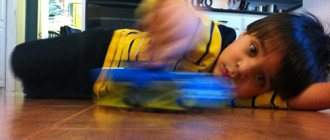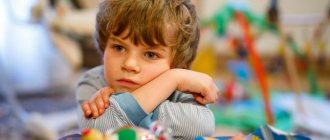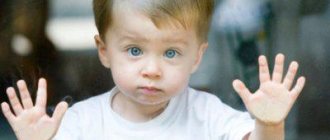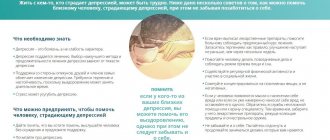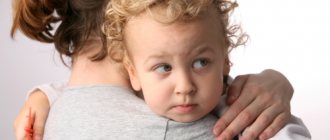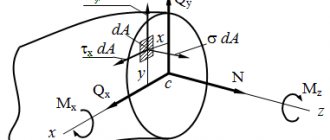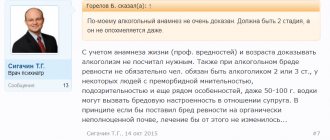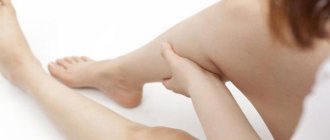The classic test for autism is very simple and can be easily done at home without the help of any specialists or complex programs. The test is designed to determine the so-called model of consciousness in children.
A model of consciousness or a model of a person's mental state is the ability to understand the emotions, desires, perceptions and intentions of other people, which allows us to predict and explain their behavior.
Minimum required information
According to modern definition, autism is a disorder of social interaction.
Previously, definitions were different and diagnoses were more specific. Now they are all combined into autism spectrum disorders (ASD), and as a result, in one category there are both people who, with great difficulty, managed to achieve socialization, and people with severe disabilities, not at all as interesting as they show in the movies. Due to changes in terminology, the number of children diagnosed with autism has increased significantly. But until 1988, such a diagnosis was, in principle, considered severe and associated with a decrease in intelligence. Modern science knows that this is not so. This is the problem of adult autists who have been able to socialize: outwardly they may look ordinary, a little withdrawn, but communication is given to them with great difficulty.
What is as simple as breathing for ordinary people, for people with autism requires thinking about every word and gesture. How to start a conversation? What to do if there is a pause? How to talk to a stranger, even if it is a salesperson in a store? How can I understand what others want from me? Each of these issues requires serious work from an autistic person. How to understand what the source of the problems is? There are some criteria that are common to all autism spectrum disorders. This:
- pronounced difficulties in communication, lack of interest in communicating with other people;
- inability to understand the mood and intentions of other people by their facial expressions and gestures (lack of empathy);
- a tendency to routines, rituals, and in some cases, to obsessive movements;
- deep interest in certain narrow topics.
Otherwise, ASDs are very diverse. Doctors unanimously consider only some of its forms to be a disease, but mostly these are features of the development of the nervous system.
Modern society does not know how to interact with special people. And the problem of autistic people is solved primarily socially, and not with drugs: sometimes there is nothing to treat them for.
XII. Nonverbal communication
1. Use of nonverbal communication is appropriate for age and situation.
2. The use of nonverbal communication is mildly impaired. Immature use of nonverbal communication, the child may not clearly show or achieve what he/she wants, in situations where a child of the same age may indicate or use a more specific gesture to indicate what he/she wants.
3. The use of nonverbal communication is moderately impaired. Basically, the child is unable to express his or her needs or desires non-verbally and cannot understand other people's non-verbal communication.
4. The use of nonverbal communication is severely impaired. The child uses only strange and unusual gestures that have no obvious meaning, or does not show understanding of other people's gestures and facial expressions.
Diagnosis of autism: problems and solutions
The diagnosis of autism in Russia is in its infancy. Children inevitably go through standard stages of socialization: clinic, kindergarten, school. If a child has autism spectrum disorders, specialists will most likely pay attention to him and inform parents about the need to consult a child neurologist and psychiatrist. It is this, and not the increasing incidence of autism, that is the reason for the so-called epidemic: they have begun to be diagnosed more often, but this does not mean that there were fewer autistic people before.
If autism was not noticed in childhood, it is more difficult to identify it in adolescence: the hormonal storm of adolescence makes mood swings common in all teenagers, not just autistic people.
The hardest thing is with adults. The cause of their problems is sought in anything but autism, and the reason for this is the established stereotype that ASD is a childhood disease and goes away with age. Firstly, it is not always a disease, and secondly, it does not go away. Learning to dance on a prosthesis is not the same as growing a new leg. As a result, adult autism is their own problem. With children and teenagers, things are also not so smooth: the hope in specialists is sometimes not justified. And then it is the parents’ task to exclude (or confirm) autism.
Testing and self-diagnosis will help you suspect autism and contact a doctor who specializes in this particular developmental feature as quickly as possible.
A selection of useful videos about ASD, signs and diagnosis (English, but much is clear without words):
Rehabilitation
Typically, autistic disorders are diagnosed in childhood, but it also happens otherwise, when the clinical picture is erased, the patient can live until adulthood and even adulthood, not knowing about his psychopathological characteristics. According to statistics, about a third of autistic people with Asperger's disease have never been diagnosed with Asperger's disease.
Ignorance of the disease contributes to serious problems in all areas of the patient’s life from family to professional activity. They are often treated as strange, mentally ill people or even discriminated against. Therefore, such patients try to avoid society, choosing a lonely life.
In specialized institutions, autistic people can undergo rehabilitation, which will help reduce anxiety, increase attention and concentration, normalize psychophysical fitness, etc. This may include music therapy, hydrotherapy, classes with a speech therapist or a theater group
The sooner correction is started, the higher the socialization of the patient will be in adulthood. In special schools, adolescents are improved in self-care and independent action, planning their activities, and social skills. They study according to special programs like ABA, FLOOR TIME, RDI, TEACH system, etc.
Some states even practice the creation of special apartments where caregivers will help patients, but the patients will not be deprived of their independence. If the disease has developed to its full extent, then such a patient will need constant care from relatives, since they are not capable of independent life.
Problems of self-diagnosis of autism in children and adults
The main question is when to resort to self-diagnosis. The answer to this depends on whether you suspect this condition in your child or in yourself.
One of the signs of autism with intact intelligence is considered to be Savant abilities - significant progress in some area (memorization, drawing, counting, reading, etc.) compared to children of the same age. This is what sometimes disorients parents. From their point of view, the child is doing well, he does a lot better than his peers, he knows more than they do. Difficulties with speech that often occur are attributed to a choleric temperament, a late visit to a speech therapist, or a change of teeth, but the main problem is not noticed: lack of knowledge.
Behavior patterns
Adolescent patients with this diagnosis are characterized by several behavior patterns.
- Most teenagers with this condition are very quiet. They cannot understand why it is necessary to communicate with people and establish connections with peers, so they do not strive for this. Adolescents have sluggish mental activity and speech may not be developed. However, autistic people successfully use gestures to communicate.
- In another form of the disease, adolescents lead a hyperactive lifestyle. They do not know how to properly express their emotions in society, so they are often irritable and aggressive. Such patients find it difficult to tolerate changes in their usual daily routine.
- Some teenagers suffer from a severe form of the disease. Such children may become obsessed with a certain idea or repeat certain sequential actions. When they experience excitement, they can make movements that are unusual for a healthy child: swaying their body, waving their arms, treading water, and others.
A selection of autism tests to take online
Testing children
Parents should suspect their child has autism if:
- he does not make eye contact with his mother;
- the baby is almost not interested in toys;
- if something does not suit him, he shows aggression towards others and himself, for example, he tries to hit others or hits his head on walls or the floor;
- hysterics occur as a response to a change in activity;
- facial expressions do not correspond to the situation;
- problems arise with imitation;
- there are speech disorders: repeating the same thing, gesticulating instead of speaking;
- loss of speech skills or slow, age-appropriate development;
- high need for regularity of actions and rituals.
At certain stages of development, each of these signs may be the norm. The manifestation of a combination of these signs as early as 2-3 years and the deterioration of the situation with age - up to 6-7 years - should be alarming. Then their severity gradually decreases.
The M-CHAT-R (The Modified Checklist for Autism in Toddlers) test, which allows identifying the risk of autism in children at an early age (from 16 to 30 months), has proven itself. Parents answer the test questions. The test contains only 20 questions; you can use the adapted online version in Russian or the original.
You can also use the offline version to study the features and rules of testing for autism spectrum disorders using M-CHAT-R (in English).
Today, the most objective test is the Childhood Autism Rating Scale. It includes 45 questions, each of which can be answered with 4 possible answers. Filled out by parents or those who remember the behavior of the subject at an early age (even if the test is taken for an adult or teenager).
Tests for teenagers
The ASSQ screening test has proven itself well. This is a short questionnaire that allows you to identify, of course, not autism itself, but character traits similar to it. It will help draw the attention of parents to the fact that perhaps their child needs help more than ever: autism in adolescence is difficult to experience. In order to clarify the results, parents should also fill out “children’s” tests.
Adult testing
Adults who were not diagnosed with autism as children show similar symptoms. Due to the fact that social adaptation does occur with age, they manifest themselves a little differently. Signs may be:
- perfectionism: every thing must be in its place and in a strictly defined position, otherwise discomfort arises;
- tendency to plan: spontaneous decisions and sudden changes cause fear to the point of panic;
- sharp sounds, bright lights, strong odors cause irritation and even physiological reactions;
- increased attention to small details;
- the attractiveness of repeating phenomena, actions, images;
- literal understanding of what was said, inability to read the mood of the interlocutor by intonation, gestures, facial expressions.
Since autism is so diverse, it is impossible to list all its symptoms in one article. The main criterion for continuing diagnosis (for adults, first of all, self-diagnosis) is problems that arise in life due to character traits inherent in the disorder.
To assess the likelihood of autism in adults, there is a test of autistic traits (AQ, Aspie Quiz). When combined with empathy quotient () and systematization level () tests, fairly accurate results can be obtained. Many more tests have been developed for adults that help clarify whether we are talking about autism or borderline conditions.
For initial self-diagnosis of autistic traits in adults, the ASS screening test can also be used with the same limitations as in children and adolescents.
In order to assess the dynamics of development of patients who have previously been diagnosed with autism, you can use the ATEC test; it must be taken monthly, and the results recorded for further analysis. You can take it online here.
The ATEK test is designed to assess the dynamics of patient development. It is recommended to take the test and record the results every month.
IX. Response and use of smell, touch and taste
1. Normal use of smell, touch and taste. The child explores new objects in an age-appropriate manner, primarily by feeling and looking. When needed, the senses of smell and taste are used. If a child experiences normal mild pain, he expresses discomfort, but is overreactive.
2. Mild impairment of the use of smell, touch and taste. The child may refuse to place objects in the mouth, may smell or taste inedible objects, and may ignore or overreact to mild pain in situations where a normal child would only show discomfort.
3. Moderate degree of impairment in the use of smell, touch and taste. The child may be preoccupied with touching, smelling, and tasting objects or people. The child's reactions can be either too strong or too weak.
4. Severe impairment of the use of smell, touch and taste. The child is busy feeling, smelling, and tasting objects to a greater extent than normal studying or using objects. The child may completely ignore the pain or react very strongly to mild discomfort.
Interesting facts about testing and self-diagnosis of ASD
Autism is a diagnosis that should be given to a child not by a test, but by a council of specialists. Given the confusion in terminology, the question of whether it is a disease or character traits must be answered in each specific case.
But if you are an adult and are wondering whether you have autistic traits, this is a reason to take care of yourself and consult a specialist. The difficulty is finding the right one. If the tests show high scores, then it is better to start with those psychotherapists and psychiatrists who specialize in working with such patients. There are few such specialists, and even fewer experienced ones among them.
There already exist, at least in large cities, self-help groups for people with autism. There you can meet those who will tell you where to go to confirm or refute your suspicions. You can also discuss the results of your tests with them.
Most often, people with autism spectrum disorders try to consult with at least two specialists. This is completely normal and correct: doctors are people too and can make mistakes, and the disorder, as has been said more than once, is very diverse.
The task of loved ones is to help them find their place in society.
Below are reviews from parents who are raising autistic teenagers.
What you had to face when raising a teenager with ASD Positive experience Negative experience
Irina. At the age of 14, my son became almost uncontrollable. He pointedly did not listen to me, talked over me and snapped at me. With age, and after visiting a psychotherapist, everything returned to normal.
Tatiana. Now my son is 16. He has become not just withdrawn, but almost a hermit. When he comes home from school, he goes straight to his room. There is no dialogue with me at all. The teacher said that he was not accepted at school and was bullied. And I want to support him, but I have no idea how to do this, given that he doesn’t even want to listen to me.
Svetlana. I'm raising a daughter. When her period started, for some reason she constantly told everyone this. Almost boasting
I had to explain the importance of keeping all sorts of “girlish” secrets secret. Yes, and academic performance began to limp
But, as the psychologist told us, this is normal even for ordinary teenagers.
Anya. Our speech problems have worsened. The child speaks as if he had chewed a record. Slow, quiet and indistinct. Plus, my son doesn’t sleep well and has become anxious and aggressive. I had to see a psychologist.
Conclusion There is always a risk that signs of autism will worsen in adolescents aged 15-16 years. However, don't panic
It is important to support the child in a timely manner and teach him to cope with life’s difficulties, both at the everyday and social level. After all, the first place where he can get support is his family
The number of teenagers with ASD has increased sharply, how can we help them?
American doctors noted a sharp increase in autism in 1990. If previously, such a diagnosis was considered a rarity, then over the past decades the picture has changed a lot. Nowadays, parents are much more informed about helping their children. Thus, Chantal Saysil-Kira, the mother of an autistic person, has written a number of books, the main theme of which is helping teenagers with ASD. In her opinion, parents can sometimes find a diagnosis where there is none.
For example, if your child has become poorly managed, then this may only be a manifestation of the transition period. If the diagnosis is confirmed, then, as the author of the book “Teenagers on the Autism Spectrum” says, the child needs to be made to feel truly independent.
You can create a daily routine for him, indicating the tasks that he will need to complete. Then place this list in a prominent place. This will allow the teenager to make independent decisions, without constant reminders from parents about important matters. If suddenly something goes wrong, he will bear responsibility for his decisions independently, which will help him develop an understanding of cause-and-effect relationships.
There is no need to try to correct your child. It is necessary to help him get along with himself, make contact more easily and learn to manage his life. Then, as an adult, he will successfully manage his own finances, build healthy relationships and lead a fulfilling life.
Article on the topic: How the diagnosis of autism was removed. Real example
III. Sensory skillsCognitive abilities
| 1. Responds to his own name: YesSometimesNo | 2. Reacts to praise:YesSometimesNo |
| 3. Looks at people and animals: YesSometimesNo | 4. Looks at pictures (and TV): YesSometimesNo |
| 5. Can draw, paint, make things: YesSometimesNo | 6. Plays correctly with toys: Yes, Sometimes No |
| 7. Facial expression corresponds to the situation: YesSometimesNo | 8. Understands what is happening on the TV screen: YesSometimesNo |
| 9. Understands explanations:YesSometimesNo | 10. Aware of the environment:YesSometimesNo |
| 11. Aware of danger:YesSometimesNo | 12. Shows imagination:YesSometimesNo |
| 13. Shows initiative:YesSometimesNo | 14. Able to dress independently:YesSometimesNo |
| 15. Shows curiosity and interest: YesSometimesNo | 16. Brave - explores the environment: YesSometimesNo |
| 17. Adequately perceives his surroundings, does not withdraw into himself: YesSometimesNo | 18. Looks where others are looking: YesSometimesNo |
Sources
- https://baragozik.ru/4-6-let/kak-vyyavit-autizm-u-detej-do-6-let-priznaki-testy.html
- https://7psihozov.ru/autizm/diagnostika-i-testy.html
- https://onevroze.ru/test-na-autizm-kak-samostoyatelno-proverit-sostoyanie-rebyonka.html
- https://med-explorer.ru/psixologiya/test-na-autizm-u-vzroslyx.html
- https://apicorrection.com/test-na-autizm-atek

